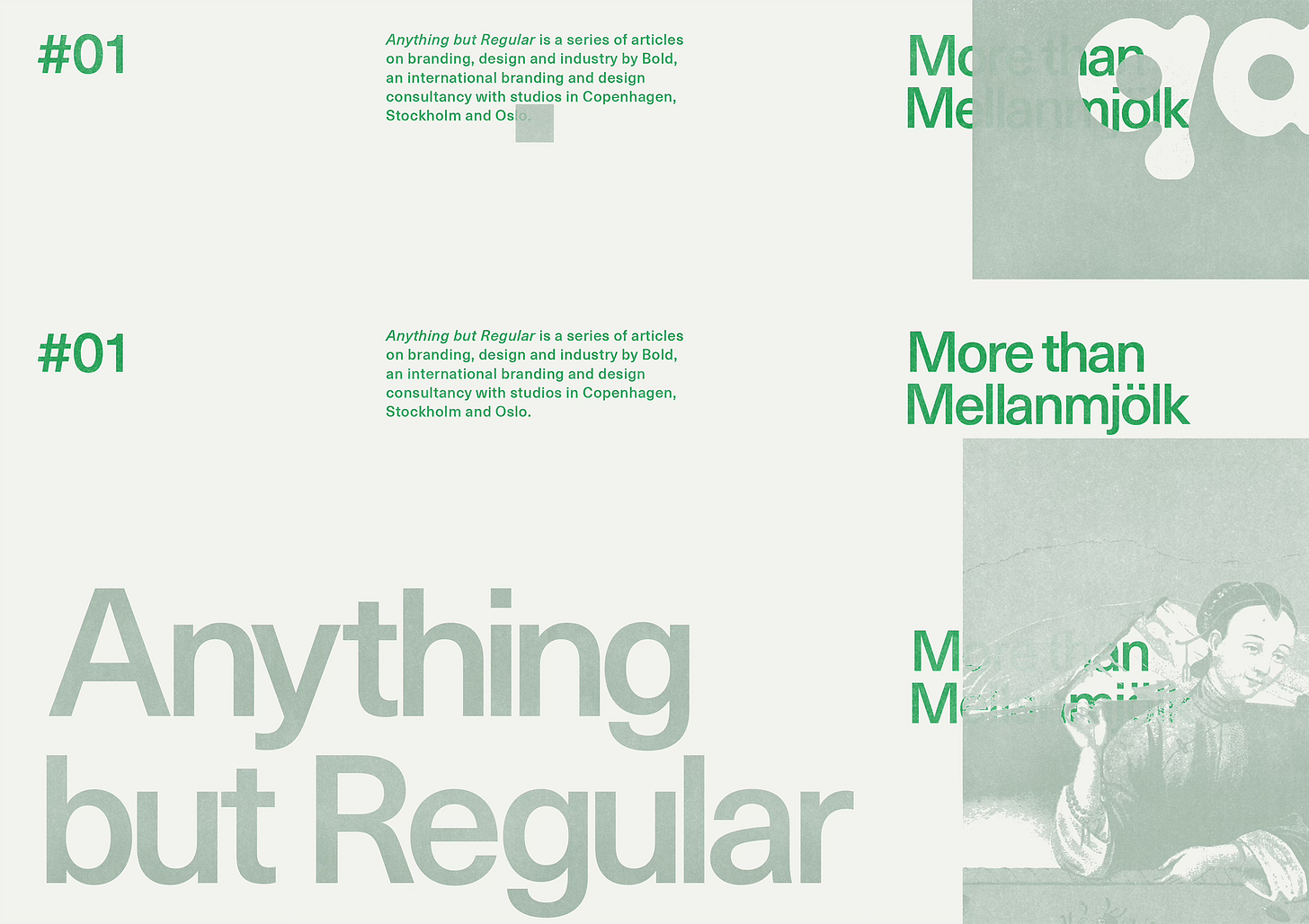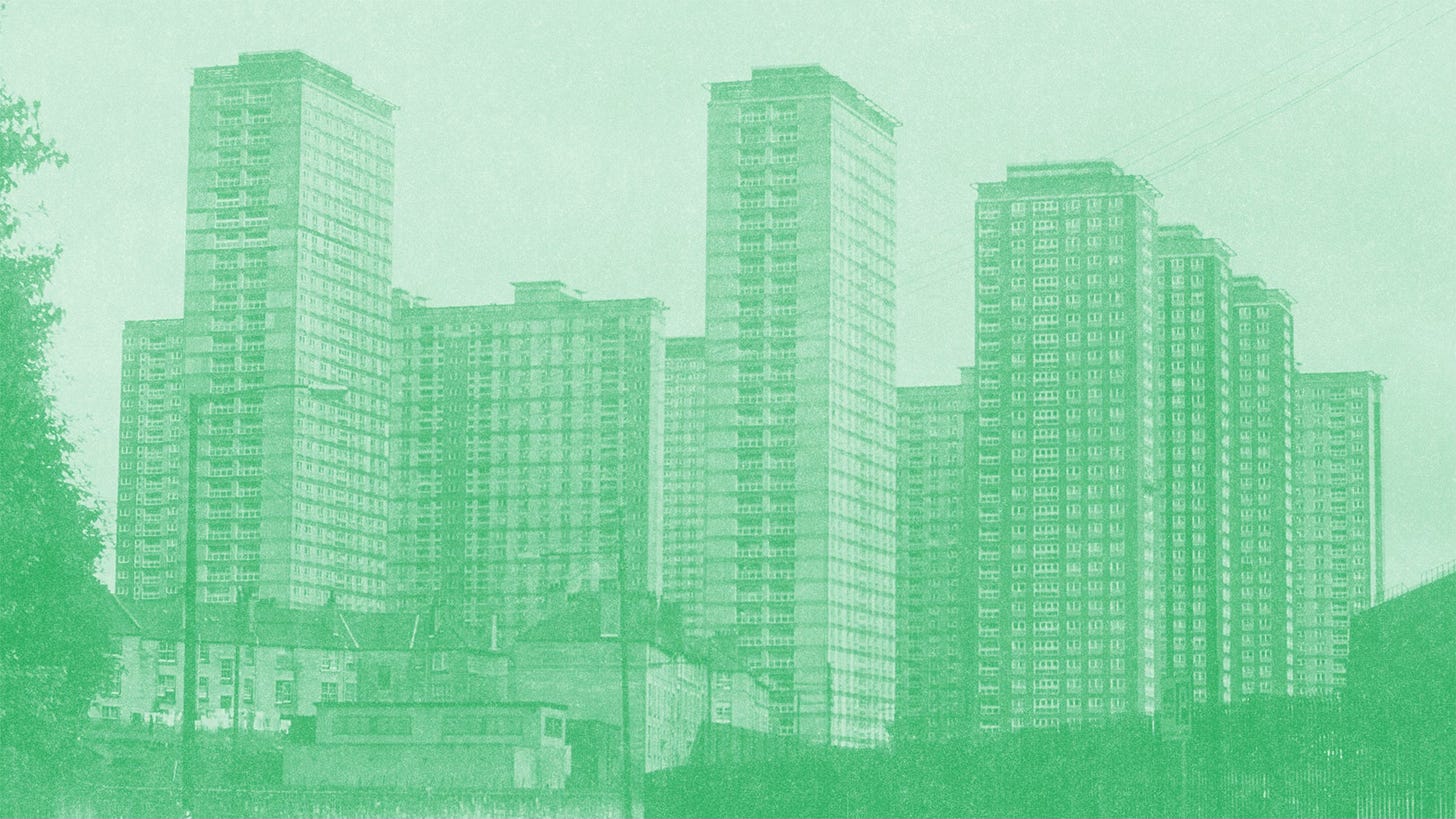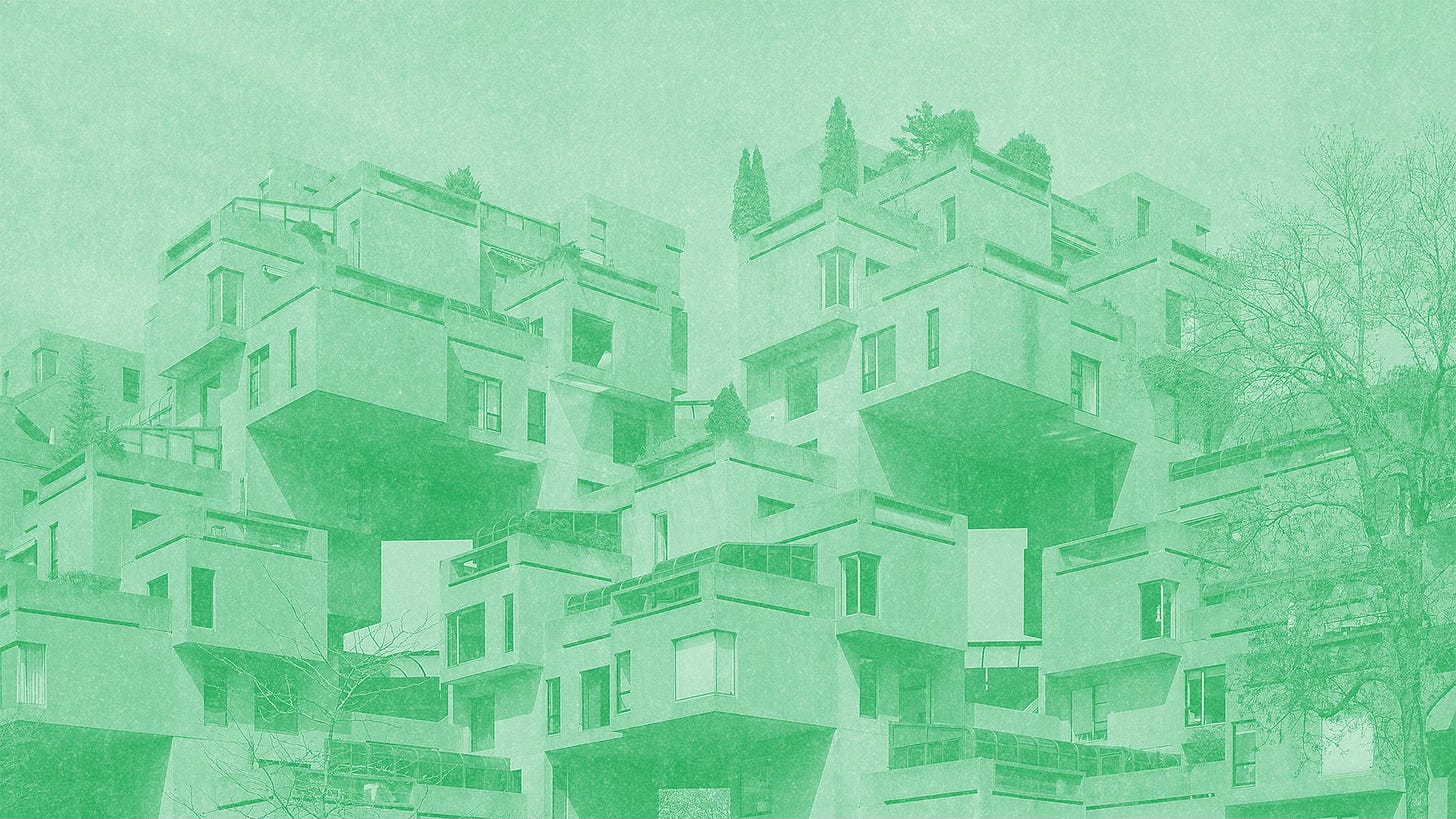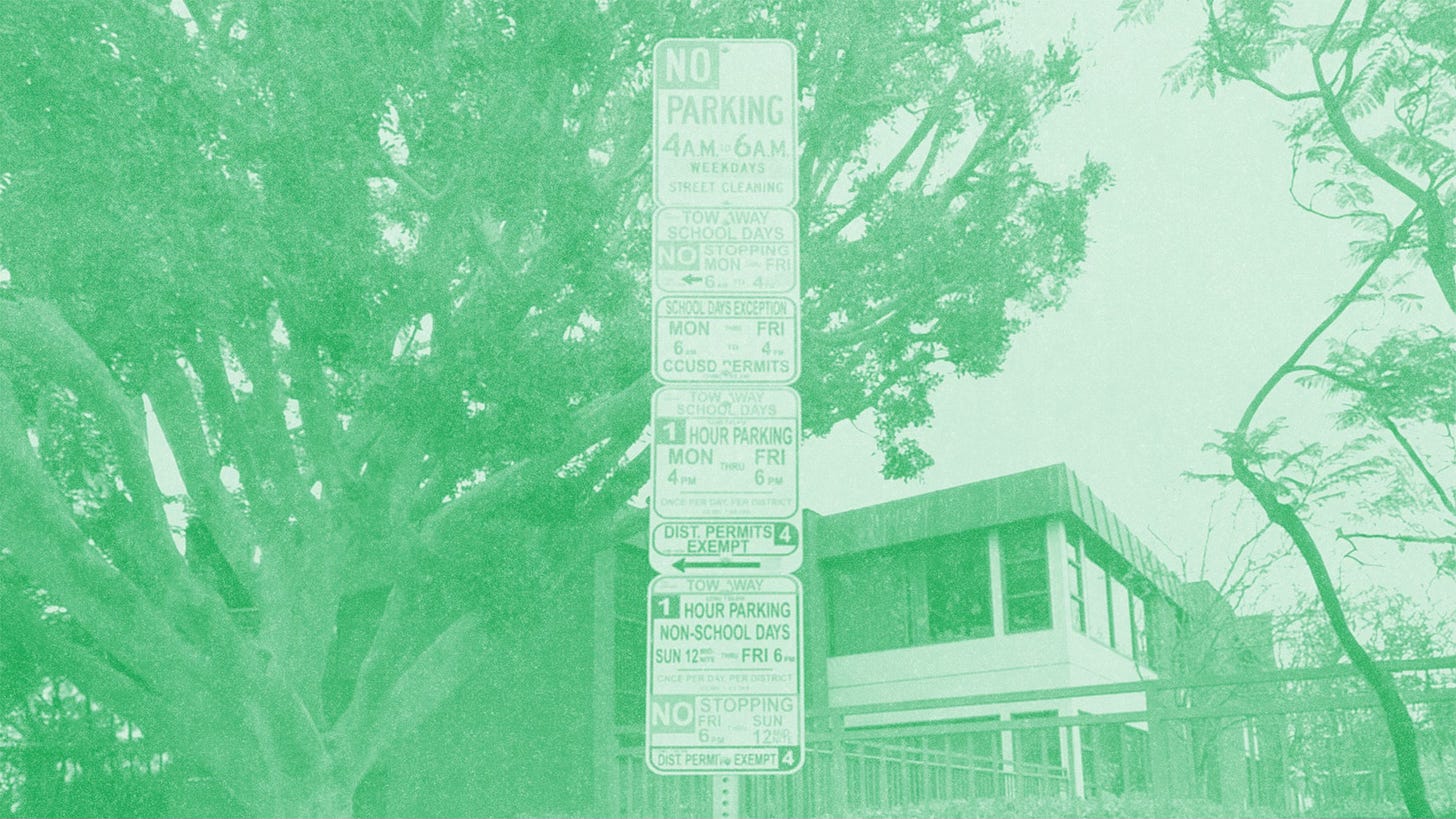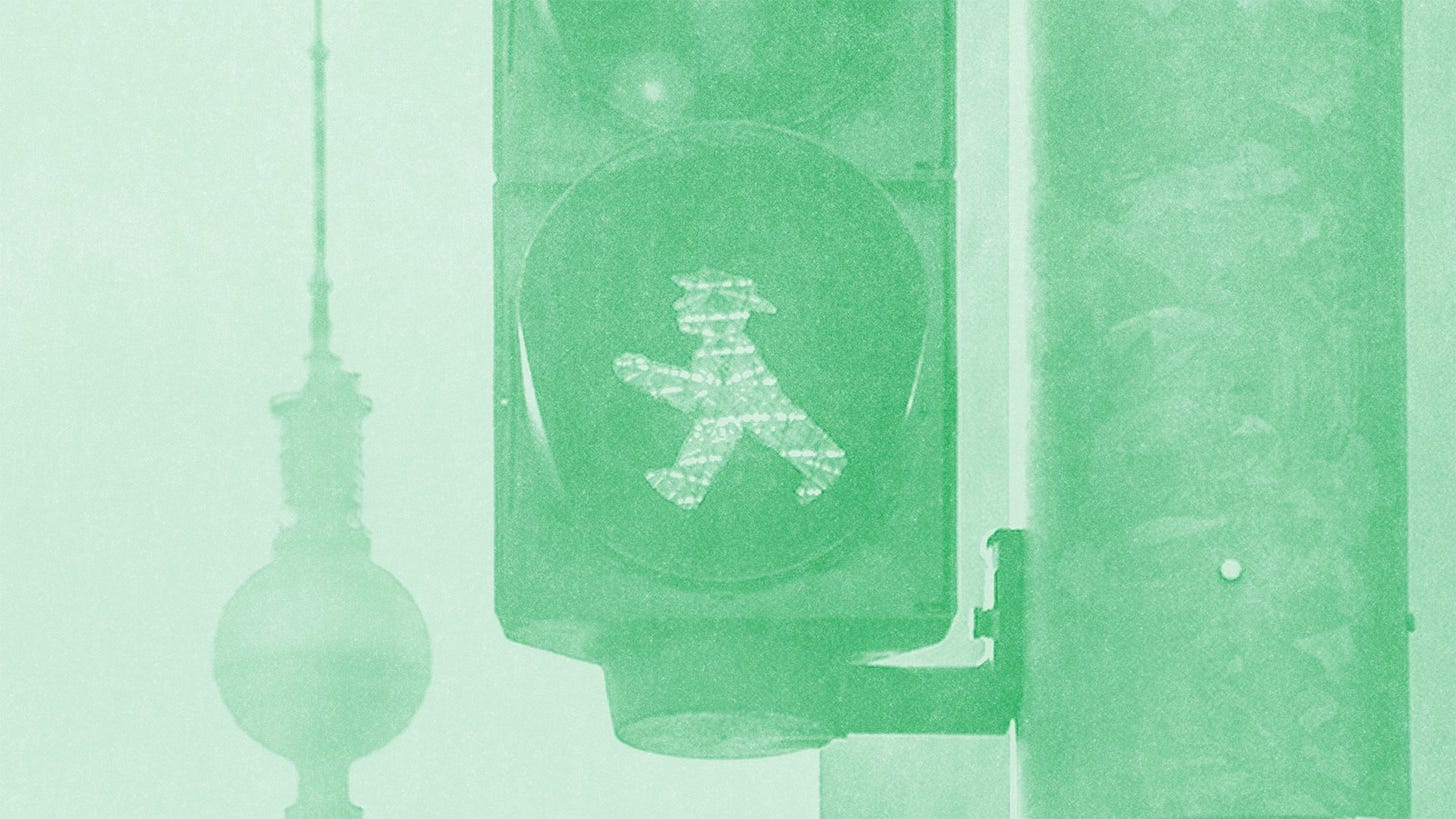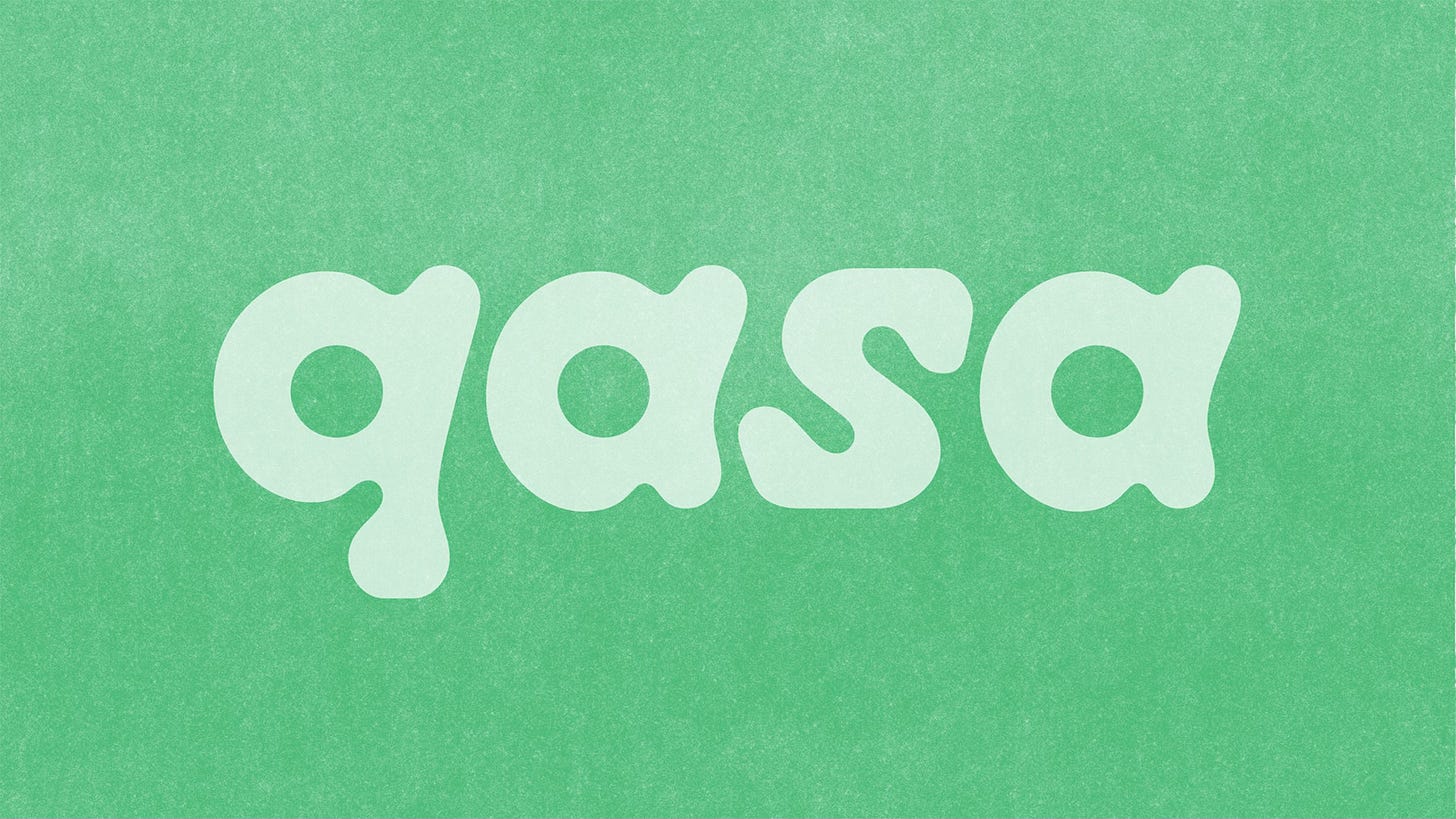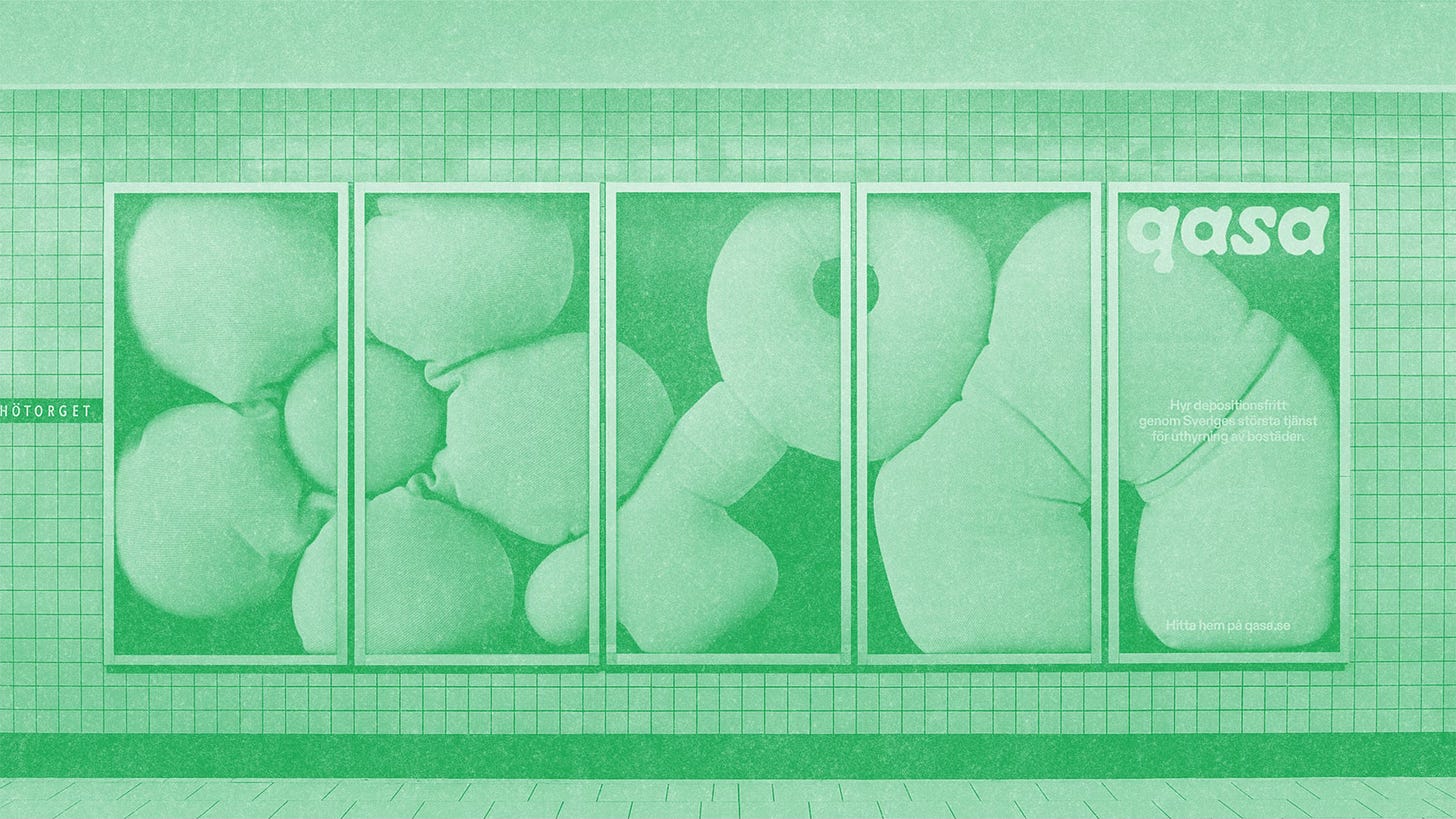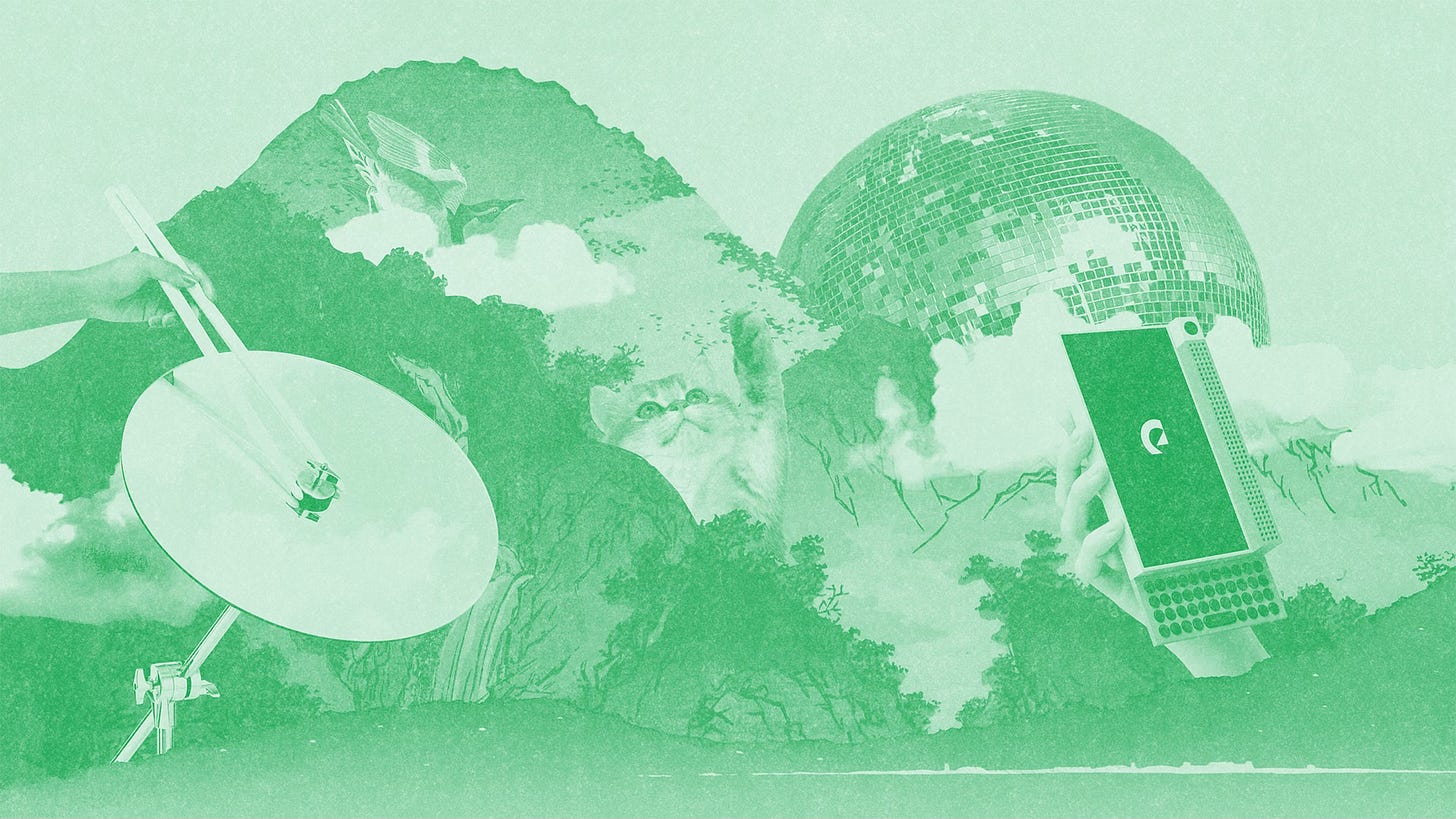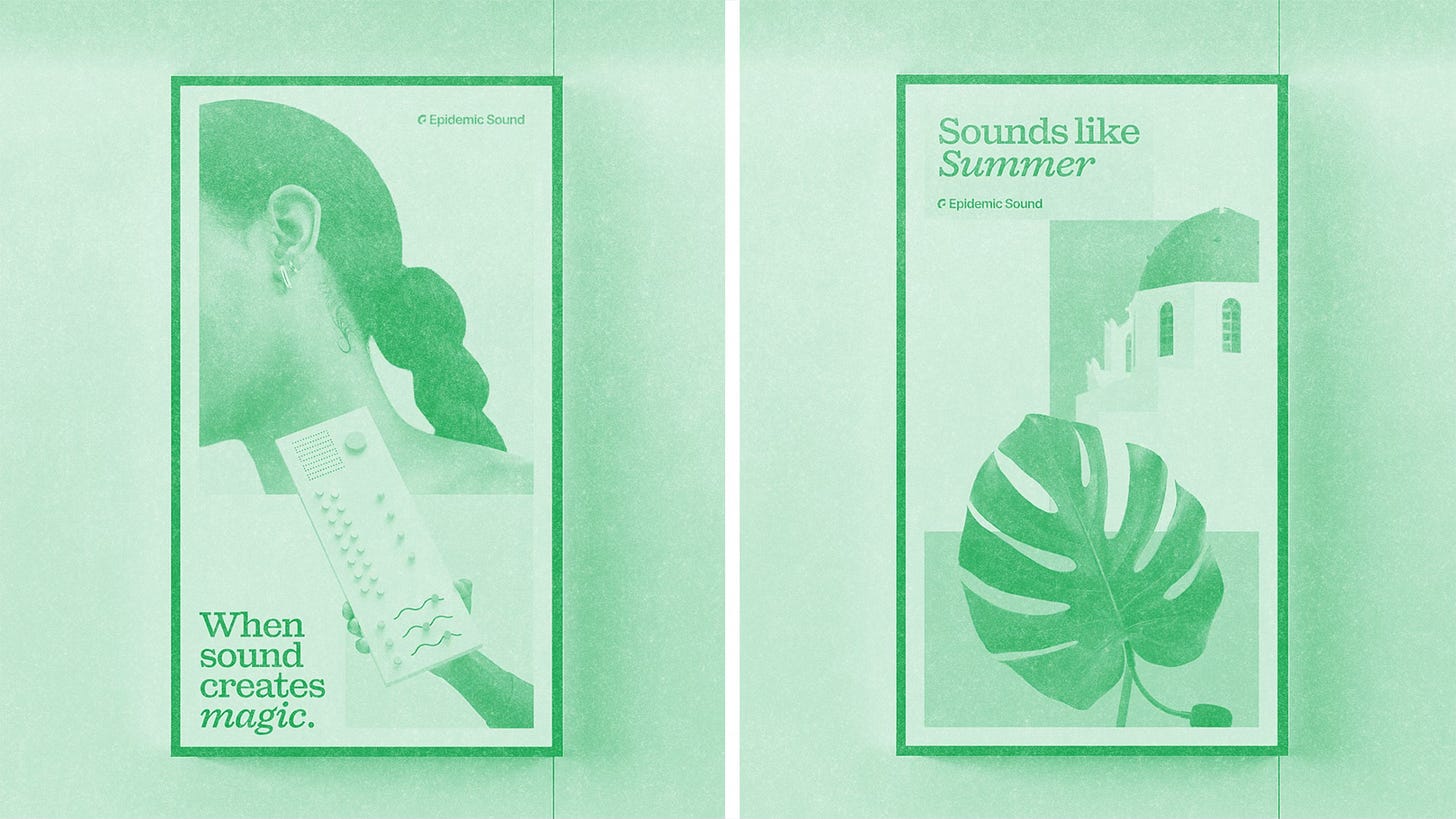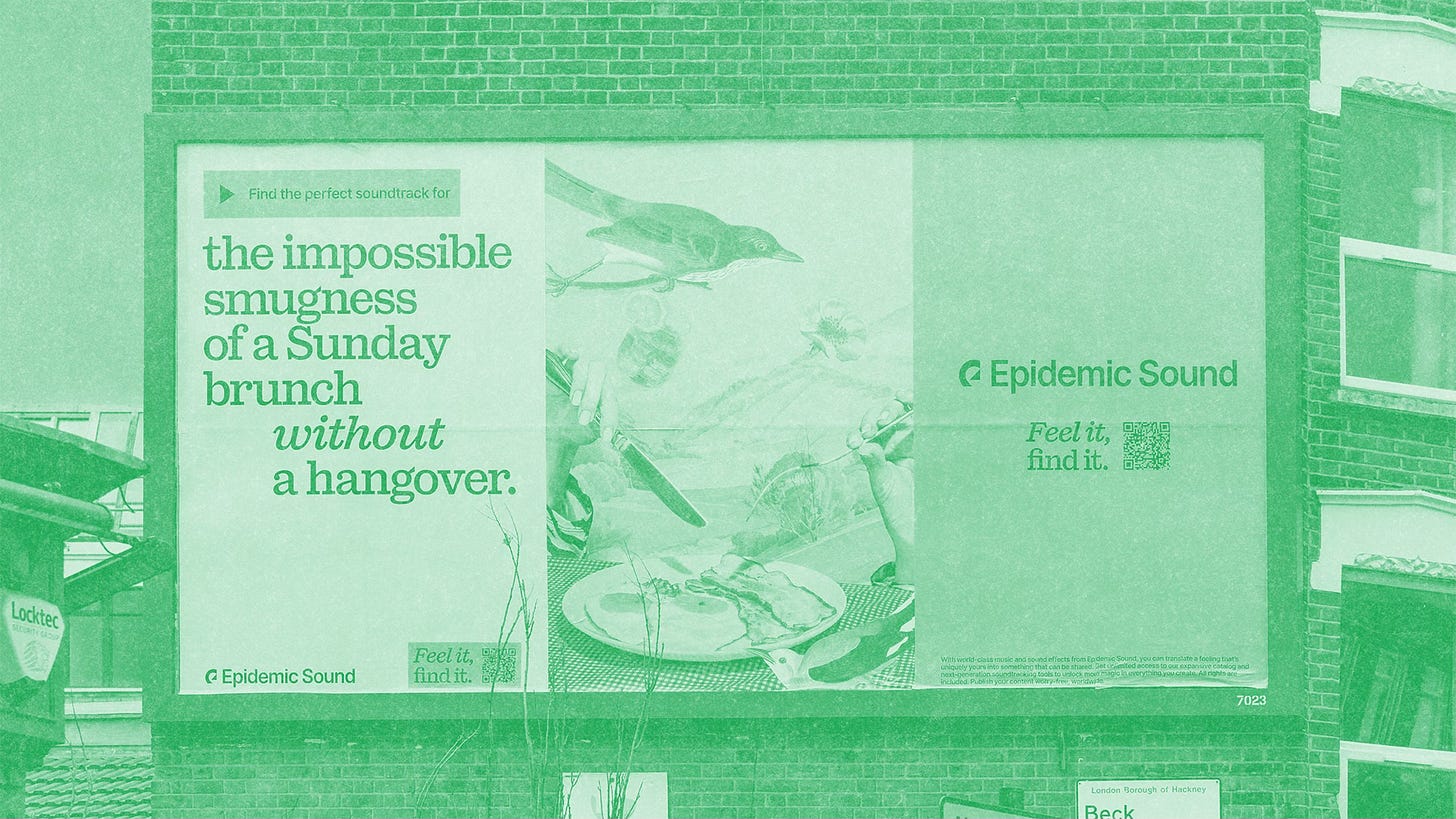Welcome to Anything but Regular, a newsletter by Bold, an international branding and design consultancy with offices in Copenhagen, Stockholm and Oslo. In this series, we explore concepts and conversations that we’ve been discussing in the studio. From creativity to commerce. Culture to corporate strategy.
In this first article, we dive into the topic of what makes for delivering creatively ambitious work in the corporate identity landscape. Why are the most creatively ambitious ideas often the hardest to sell through? How does unconventional thinking survive in environments driven by consensus? And what does it take to follow through on a creatively ambitious concept through fruition?
Decision by Consensus
Broadly speaking, most people would agree that decision by consensus is a good thing.
Consensus is fair. Consensus is democratic. Consensus is risk-averse. It tapers down the controversial perspectives, and it guides us towards a solution that works. Something that, sure, no one is moved by — but that everyone can live with. And in a lot of cases, that’s the objective too, isn’t it?
Take the design of a drop-down menu for example. Nine times out of ten, the objective of a dropdown menu is pretty straightforward. It needs to be clear, informative, and easy to interact with. Rather, a dropdown menu needs to be functional. Intuitive as possible, to the most number of people as possible. And when this is the goal, consensus-driven decision making is crucial.
That being said, a dropdown menu is not designed to be emotional. No one is gauging its success on how culturally authentic, inventive, or moving it is. No dropdown menu is designed to make a lasting impression. No one is identifying with, or finding kinship in, their dropdown menu.
Brands however are a different story. The most successful brands are also often the most divisive. You’re either on team Apple or team Android. Team Nike or team Adidas. People have a lot to say about these brands, from all directions — and it’s that ability to muster up feelings at all that allow a brand resonate. And, at their best, make a meaningful impact — as that’s what allows a brand to successfully shape a community, define a subculture, or lead an industry.
The challenge here, often lies in the fact that this idea can be counterintuitive. As, effectively, this means that what we need to accept in the corporate identity process is that risk is inherent to creating impactful brands. Consensus will always lead to something functional — but it takes conviction to create something impactful.
Swedish 101
There are a couple of terms in Swedish that can help speak to the creative risks that can result from consensus-driven decision making.
‘Mellanmjölk’
/MEL-lan-myulk/
This translates directly to “middle milk.” But in practice, it’s shorthand for something so balanced, so inoffensive, so thoroughly middle-of-the-road that it’s basically invisible. Functional? Sure — but memorable? Not really.
The image above is of the red road flats council estate in Glasgow. Functional, but easily forgettable tower blocks that can be mistaken by many for countless high-rises throughout Europe. They were demolished by 2015.
The image above features Habitat 67, a housing complex designed for the Montréal Olympics in 1967 that was intended to be temporary. Bold and unconventional, reactions to the development were initially mixed — ranging from praise to outright hostility. Today, Habitat 67 is one of the city’s most beloved, iconic, and immediately recognisable buildings.
It can be a risk in any creative endeavour that’s shaped by too many contrasting opinions, where the sharpness of the original idea has been blurred by too many fingerprints — resulting in work that’s void of any character.
Mellanmjölk is always a risk when we try to appease every voice in the room, so much so that we risk losing track of what made the original idea sharp, strange, or special in the first place.
‘Kaka på Kaka’
/ˈkɑː.kɑː pɔː ˈkɑː.kɑː/
Literally, this translates to “cookie on cookie.”
It’s a way of describing excess — when there’s so much piled on that nothing stands out. Too many elements competing for attention, until the whole thing blurs. A lot of noise, and little focus.
This parking sign in Los Angeles attempts to convey so much information at once that it overwhelms the reader. The result is visual and cognitive clutter, where the viewer’s attention is split between competing details. In trying to cover every possible condition, it sacrifices clarity—and the most important point, whether you can park or not, gets buried in the noise.
The ‘Ampelmännchen’—Germany’s famous crossing sign—originated in East Berlin in the 1960s. Clear yet full of character, it delivers its message in a way that’s hard to forget. So iconic, in fact, that after the fall of the Berlin Wall, a nationwide “Save the Ampelmännchen” campaign stopped efforts to replace it, ensuring the signs still dot streets across East Germany today.
Apply that idea to a corporate identity, and kaka på kaka is what happens when you keep adding — more metaphors, more flourishes, more storylines — until the original idea gets lost in the clutter.
An impactful brand takes conviction, but conviction takes restraint. As, if a successful identity is memorable, it needs to be focused enough to provide clarity on what it is that we’re meant to remember.
Again, with Conviction
Leading a creative process with conviction takes courage, from all seats at the table.
For the strategist, it takes courage to put forward a positioning that goes against expectations. For the designer, it takes courage to put forward, and follow-through with, creatively ambitious work. And for the client, it takes courage to know when to listen and when to hold-the-line.
As, it’s this sense of conviction from all members of a creative partnership that makes for brands that are less mellanmjölk — and more ambitious.
So, what does that look like in practice?
To illustrate this, we’ve selected two recent Bold projects that show how ambition and conviction can push corporate identity creative beyond the ordinary.
Qasa: The Feeling of Home
When Qasa reached out to us, they were were in need of a new corporate identity that could support them in their rapid growth from a Swedish property rental platform, to an international marketplace operating across a growing number of countries across Europe.
From the get-go, our shared ambition was clear; Create a brand identity that could help position Qasa as the next-generation global home-rental experience. An experience that breaks the transactional category norm and instead focus on making the intangible feeling of home tangible.
The result was an identity toolkit that embraced the cosy feeling of home — from pillow-like brand illustrations, to soft UI components and an extra squishy wordmark.
The identity rejected the landscape’s expectations and embraced a positioning and identity that were truly distinct, resulting in a brand that generated truly meaningful impact for the company.
Epidemic Sound: Sound that moves
As global soundtracking platform, Epidemic Sound came to Bold with the ambition to rework their identity to reflect their outlook; Not just a transactional audio library, but a genuine partner for creatives. They needed a brand that looks, moves, and speaks like the collaborator they truly are.
The solution was an expressive design system that channelled the creativity of its users. Drawing from the editing interface of their platform, we built a toolkit packed with eclectic collages, inspiring imagery, and a healthy dose of irreverence.
The result is a radical shift, from category convention to creative juggernaut. A vibrant expression that mirrors the energy of its creator community, to give the brand the tools to inject personality across every touchpoint.
In Conclusion
Decision-by-consensus is an effective strategy in many processes — but without conviction, it’s more than likely to hinder a brand’s ability to be memorable, or meaningfully impactful.
This doesn’t mean pushing through an idea through at all costs. It means listening deeply to what matters — for the business, the project, and the team — and crafting a solution that solves for that. While making sure it maintains its character and clarity throughout journey of a project, resulting in a work that’s as ambitious as the original intent.
So when the process starts to stretch, pull, or drift, it can be helpful to ask ourselves;
Are we sharpening what makes this identity characterful — dulling what makes it unique? (i.e. Mellanmjölk)
Are we building on the core idea — or overcomplicating it? (i.e. kaka på kaka)
Great work doesn’t hold its edge by chance. It holds its edge because conviction guides it from start to finish.



